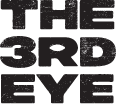How many people in the United States have health insurance? According to our study, most people do when it comes to adults ages 18-45.
Despite this, accessing the care provided by insurance can be complicated and time-consuming. The average American might have conceptual access to healthcare — but do they really? Or are the barriers of time and cost too difficult to overcome?
Consider what has to be done before an appointment even starts. Understanding who is in your network, which coverage is available to you, scheduling an appointment that won’t affect your earning too drastically — all steps that only become more difficult if you live somewhere rural or, God-forbid, need a specialist. The average American may be insured in theory — but what good is it if these barriers are still in place?
What do we mean by The Access Myth? It’s the prevalent assumption that historically underrepresented populations are underinsured.
Most marketers know healthcare access in the United States is limited for minorities — but it’s assumed that it’s because most are uninsured. While accessing healthcare is difficult for many, that difficulty doesn’t come from a lack of insurance. It more so comes from a lack of access to benefits insurance provides.
One of the assumptions in the healthcare world is that historically disadvantaged groups are underinsured. New data, as seen in the charts, shows that isn’t the case. The real problem, as it turns out, is that disadvantaged people have less time to use it. Hourly employment doesn’t afford the time for healthcare without loss of wages — becoming a vicious cycle.
Source: Defining Health & Wellness, And The Barriers To Change, 2023
By The Numbers: Who is insured and who does the insuring?

If someone is insured, it is either via government programs like Medicare and Medicaid or through their employer.
In our study on Black, Hispanic, and White, non-Hispanic Americans ages 18-45, White, non-Hispanic respondents overwhelmingly had insurance through their employer. Hispanic and Black respondents, on the other hand, were more likely than White respondents to have insurance through Medicaid.
Our study may have been contained to adults (excluding seniors), but we know from KFF’s research that “adults are more likely to be uninsured than children” due to limited public coverage in some states. We also know from census data that 18.4% of Americans have coverage through Medicare. That same census data tells us that:
In 2021, 8.3 percent of people, or 27.2 million, did not have health insurance at any point during the year, representing a decrease in the uninsured rate and number of uninsured from 2020.
Source: census.gov
This shows that, though our study just surveyed adults ages 18 to 45, a similar pattern exists across all Americans.
It seems that in 2021, the pandemic increased the number of insured Americans — likely due to government subsidies and policies that protected loss of coverage.
Coverage gains were driven by increases in Medicaid and non-group coverage that offset declines in employer-sponsored coverage and were particularly large among Hispanic people and people in working families.
Source: kff.org
With that in mind, who is uninsured? According to KFF, “most uninsured people are in low-income families and have at least one worker in the family.”
With more insured Americans, how can healthcare brands help consumers tap into the health improvements their insurance can provide? First, we need to analyze what is hindering them.
Barriers to Healthcare: What stops Americans from accessing their insurance benefits?
It’s promising that 90% of adults in our study are insured — but health coverage doesn’t equate to access in 2023. Hourly employment doesn’t afford the time for healthcare without loss of wages — becoming a vicious cycle.
Our respondents cited time and cost as their primary barriers to accessing healthcare.
Many noted that the loss of wages wasn’t worth taking the necessary hours off to make a doctor’s appointment. Individuals covered through Medicaid often work hourly jobs, so every hour lost is income lost. People who are insured through their employers, on the other hand, generally get the opportunity to take Paid Time Off for health-related appointments.
Respondents insured via their employers were, by and large, White — showing how cost and time barriers affect people of color disproportionately. So, while many Hispanic and Black Americans have health insurance, access to the care it provides remains limited.
Also, minorities may be more insured than ever, but they are still more likely to be uninsured than White Americans.
“People of color are generally at higher risk of being uninsured than White people, though Asian people have the lowest uninsured rate.”
Source: kff.org
How Healthcare Brands Can Help
Since coverage and access don’t go hand in hand anymore, healthcare marketers need to shift their focus from obtaining healthcare to access and education.
- Debunk the myth that historically underrepresented populations are underinsured
- Increase consumer awareness of programs available to help their particular access challenges — like financial support programs for medications, available mental health apps, etc.
- Address the need for health care education by life stage to enable confidence in consumer options. For instance, Seniors have greater need for understanding since their coverage and access have added intricacies and segmented plans.
Conclusion
Give the consumer confidence. How? Arm them with knowledge.
Discover what is available to your target audience — and let them know! Maybe it’s collaborating with creators in the health, wellness, or even personal finance sectors. Find where your target lives, and teach them there.
Only an empowered, confident consumer will take that brave first step toward improving their health.
Need health creating content that educates your healthcare consumer? Email us and we’ll help!



